Board Books: Colors
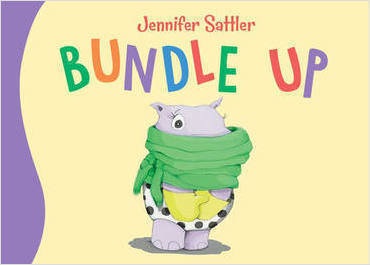 Bundle Up by Jennifer Sattler (Sleeping Bear Press, $7.99)
Bundle Up by Jennifer Sattler (Sleeping Bear Press, $7.99) Find Colors by Tamara Shopsin and Jason Fulford (Phaidon Press, $14.95)
Find Colors by Tamara Shopsin and Jason Fulford (Phaidon Press, $14.95)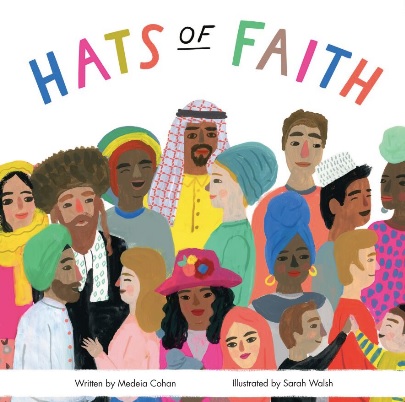 Hats of Faith by Medeia Cohan, illus. by Sarah Walsh (Chronicle, $9.99)
Hats of Faith by Medeia Cohan, illus. by Sarah Walsh (Chronicle, $9.99) Bundle Up by Jennifer Sattler (Sleeping Bear Press, $7.99)
Bundle Up by Jennifer Sattler (Sleeping Bear Press, $7.99) Find Colors by Tamara Shopsin and Jason Fulford (Phaidon Press, $14.95)
Find Colors by Tamara Shopsin and Jason Fulford (Phaidon Press, $14.95) Hats of Faith by Medeia Cohan, illus. by Sarah Walsh (Chronicle, $9.99)
Hats of Faith by Medeia Cohan, illus. by Sarah Walsh (Chronicle, $9.99)Bustle listed "15 rules for borrowing books, so you don't lose your friends in the process."
---
Inspired by last night's Emmy awards, Quirk Books wondered: "What would author acceptance speeches look like?"
---
Journalist and broadcaster Jenni Murray recommended "the best books about history's forgotten women" for the Guardian.
---
The alternative bard: Electric Lit explored "the 10 weirdest places Shakespeare plays have been performed" and Buzzfeed imagined what it might be like "if Shakespeare characters could text in 2018."
---
"Getting a grip: 11 literary quotes about hands" were collected by Signature.
---
Gastro Obscura peeked "inside a 17th-century 'barbarian' cookbook from Japan."
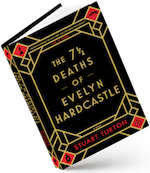

Nineteen years ago, a young boy was murdered on his family's estate. On the anniversary of the tragedy, his parents are hosting a masquerade, inviting all the people who had been present then. That Lord Peter and Lady Helena Hardcastle are strangely elusive during their party is just one of the mysteries in Stuart Turton's mesmerizing debut novel, The 7½ Deaths of Evelyn Hardcastle.
A man wakes up in a forest, wind howling, rain pouring; his mind is a blank. He hears a woman scream. A stranger comes up behind him, drops a compass into his pocket, and whispers "east." The man heads in that direction, casting up at a Georgian mansion, Blackheath, where he's met by a scarred, silent butler. The man rushes in, begging for help--in the forest, he heard a gunshot. He seems to know that the woman who screamed is named Anna. A "decadently rumpled" man greets him by name--Sebastian--and questions him, but Sebastian Bell has no answers, only his belief that Anna--whoever she is--has been murdered. A physician is sent for, who "smells of brandy, but cheerfully so, as though every drop went down smiling." He advises Bell to rest. So far, a straightforward, albeit slightly eerie, mystery. But later in the day, Bell's passage down the hall is blocked by a man dressed as a medieval plague doctor. He asks Bell, "You woke up with a word on your lips, what was it?" Bell answers "Anna," and the plague doctor replies, "That's a pity." Bell has no idea what's happening, nor does the reader, and the intrigue is just ramping up.
Bell then meets Evelyn Hardcastle, the daughter of the house, who informs him that he's a Harley Street doctor, invited to the party to sell dope to the guests. That night, when Bell returns to his room, he finds a dead rabbit--stabbed with a carving knife--in his bed, with a note from the Blackheath footman, and he faints. He is awakened by the doorbell; when he answers it, he finds a frantic Sebastian Bell asking for help! Now Turton's novel veers wildly off conventional tracks. On Day Two, Bell has inexplicably become the butler, Collins. On Day Three, Bell awakens as playboy Donald Davies, with the plague doctor waiting in the shadows of his bedroom. He's told, "You were a doctor. Then a butler, today a playboy, tomorrow a banker. None of them is your real face, or your real personality. Those were stripped from you when you entered Blackheath, and they won't be returned until you leave." The plague doctor will not tell Bell who he really is (Aiden Bishop, he later discovers) nor how he got to Blackheath, but does tell him how to escape: "Somebody's going to be murdered at the ball tonight. It won't appear to be a murder and so the murderer won't be caught. Rectify that injustice and I'll show you the way out." He goes on to explain that the current day will be repeated eight times, and Bishop will see it through the eyes of eight different hosts. If he doesn't solve the murder, he'll be stripped of his memories and returned to the body of Bell to start over again.
After being a drug dealer, a butler, a coward, a glutton, and a rapist, he has three hosts left. How many times has Bishop danced this dance with the plague doctor? More than the doctor can recall. But each time, Bishop recalls an additional fragment. Has he enough clues to finally break away? Can he hold on to this knowledge long enough to escape the footman who has inexplicably become his nemesis and deliver it to the plague doctor? "It's like I've been asked to dig a hole with a shovel made of sparrows," Bishop laments. While the eight "detectives" contend with murder, blackmail, secret codes and hidden messages, it becomes harder for Bishop to keep a straight course as the different personalities mix in him: "I'm no longer a man, I'm a chorus."
Why did Aiden Bishop come to Blackheath in the first place? What is the underlying secret of the plague doctor? How is Evelyn Hardcastle murdered? Are these the fantasies of a madman? In this remarkably complex novel, Turton has created a mind-bending puzzle that rewards a second reading to uncover clever hints missed the first time. His plot is dazzling, as is his premise, and will have readers debating the implications and possibilities in book groups and on blog posts. An added delight is his sharp prose, as well as his wit. Maids scrub "their youth away on the floor"; Lord Cecil has declined--"A ragged specter of beauty suggests itself, but his stash of splendor has almost run dry."
Aiden Bishop wonders if the future is a promise we can't break, but he struggles on. The other guests repeat the same decisions every day, but Bishop is able to make slight course corrections over the innumerable eight-day loops. Stuart Turton makes you care about Bishop's progress, while dishing up an intricate, ingenious and enthralling mystery. --Marilyn Dahl
 |
|
| photo: Charlotte Graham | |
Stuart Turton has a degree in English and Philosophy, which makes him excellent at arguing and terrible at choosing degrees. Having trained for no particular career, he has dabbled in most of them. He stocked shelves in a Darwin bookshop, taught English in Shanghai, worked for a technology magazine in London, wrote travel articles in Dubai and now he's a freelance journalist. Turton lives in London with his amazing wife and drinks lots of tea. He's not to be trusted. In the nicest possible way. The 7½ Deaths of Evelyn Hardcastle (Sourcebooks Landmark) is his debut.
You're a journalist. What prompted you to write not just a novel, but an intricate puzzler of a novel?
The first novels I ever devoured were by Agatha Christie, so I'd wanted to write one for as long as I could remember. I actually took my first swing at one when I was 21 and bombed spectacularly because I didn't have a clever idea to put at the heart of it. Most of the really special Christie novels have a brilliant twist or plot hook, and it took me about 10 years to come up with mine. While I was waiting for that to happen I became a journalist because, sadly, you can't bill anybody for your "thinking time."
The chronology in the book is mind-bending, in many ways. Just when I thought I'd figured out the time period (carriages), a car or a day planner pops in. Sometimes Aiden knows what will happen before it does, other times he's surprised. Were you surprised at the direction the book took?
If I was surprised, I'd done something wrong! Because the plot was so intricate and dependent on certain people being in certain places at certain times, I planned out the entire day in two-minute intervals. That allowed me to keep track of every character's movements through the house and grounds. The only time I was surprised was when I indulged an idea that wasn't in the plan. Two months later, I'd written myself into a corner (three impossible things were all happening at 1:26 pm) and I had to scrap 40,000 words. I nearly threw myself out of a window. After that, surprise became a bit of a dirty word for this book. As for the time period--that slight sense of fuzziness was entirely intentional. I wanted to write an Agatha Christie-style novel that incorporated everything she was famous for, including the twists, outlandish characters, clever murders and the period. She wrote her books between the 1920s and 1960s, and because my story has a time-travel strand, I didn't see any reason not to treat that period as a historical grab bag.
At one point Aiden says, "I'm no longer a man, I'm a chorus." How did you manage that chorus?
I have all the Post-it notes in the world, I reckon. Two walls of my study were covered in utterly insane-sounding descriptions of my characters ("face like old furniture--not same for R" being a case in point) If the police had raided my house, they would have thought I was masterminding the world's weirdest murder. At heart, each of my character's hosts was created to pace the novel, which massively helped me to define them. I introduce a clever old man to talk a lot and slow it down. I introduce a stupid young man to get into fights and speed it up.
Your character descriptions are perfect ("Herrington's spent the evening tossing around tedious stories without bothering to indulge in the courtesy of exaggeration"). I'd imagine that your journalism experience honed this ability.
That's very kind, thanks! When I was a travel journalist, there was loads of room for that sort of creative description, and I really enjoyed it. If I was writing about technology or finance, I tended to write in a bit more of a straitjacket because the readers were far more interested in facts than fancy prose. To be honest, I went slightly mad when I started the book. My descriptions were far too flowery, and I had to prune them back. If I hadn't, you'd probably still be reading it.
Do you have a favorite character? I'm partial to the obese banker, Ravencourt.
Ravencourt's my favourite, too. For me, it's because Aiden's very unkind about Ravencourt when he first wakes up in his body, but as he goes along he realizes the power of Ravencourt's intellect--and ends up yearning to be Ravencourt when he's in other hosts. It's also a character with a lot of firsts. He's the first to understand the rules of the day and work out how they might be bent to his benefit. He's the first to make a genuine friend and he's the first to encounter the footman.
After finishing The 7½ Deaths of Evelyn Hardcastle, I wondered if there will be a sequel. You couldn't replicate the story with another character, but what happens to Aiden and Anna? Or are you writing a completely different novel?
I've been asked about a sequel a lot, but I always intended this to be a one-off novel. Any open questions at the end of the book weren't meant to tease another one, just give the impression of a continuing world. I wanted the reader to feel the characters were carrying on without them. Really neat endings always feel very artificial to me. Sorry, that's a really long-winded way of saying I'm writing a completely different novel next. It'll be mad as a bag of cats though, so it'll have that in common with 7 1/2 Deaths.
What book(s) have you been excited about recently?
Marcus Zusak has just announced he's releasing another novel, which is brilliant. It's been 10 years since The Book Thief--which I thought was utterly extraordinary. Can't wait to see what he's been cooking up this last decade. I loved Circe by Madeline Miller, and I'm currently reading If on a Winter's Night a Traveler by Italo Calvino, which is the sort of weird that makes me do handstands. --Marilyn Dahl
Shelf vetted, publisher supported.

Discover: This is a beautiful tale of young love and young loss, and the magical powers of friendship to heal broken hearts.
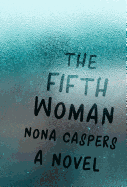
Discover: The Fifth Woman is a book of connected short stories that depicts the surreal aftermath of losing a loved one.
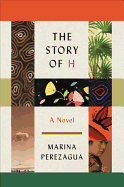
Discover: A Japanese woman and an American soldier search for a girl who went missing in the aftermath of the atomic bombing of Hiroshima.

Discover: The story of a CIA spy gradually unfolds, narrated by both his daughter and a mysterious case officer.
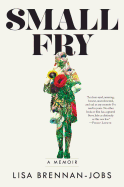
Discover: The daughter of Apple cofounder Steve Jobs writes an emotional, cathartic and haunting coming-of-age tale of family dysfunction.
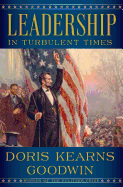
Discover: Presidential biographer Doris Kearns Goodwin examines the nature of leadership as demonstrated by the careers of four major U.S. presidents.
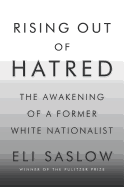
Discover: An up-and-coming White Nationalist sees the world in a different light when a diverse group of college students treats him with kindness and compassion.
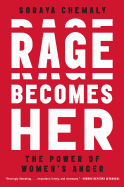
Discover: In her look at the power of female rage, Soraya Chemaly argues that anger is the first step on the road to justice.
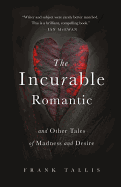
Discover: Frank Tallis, a British clinical psychologist and mystery writer, chooses 11 of his most interesting cases to illustrate the link between romantic turmoil and mental health.
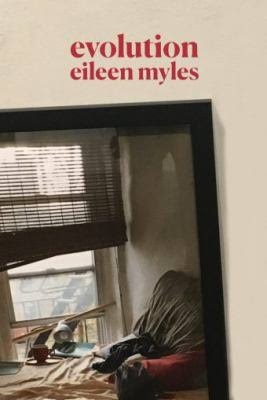
Discover: In a bold collection of poems, Eileen Myles reinforces their justifiable fame as the unabashed voice of what's left of New York's downtown edginess.
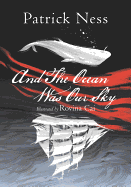
Discover: In Patrick Ness's young adult retelling of Moby Dick, a whale hunts down the white ship of her man enemy.
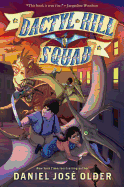
Dactyl Hill Squad has everything a reader could possibly want in a middle-grade book: action, adventure, magic, humor and dinosaurs. Magdalys is the same kind of young, engaging and flawed protagonist as Philip Pullman's Lyra--a character readers can't help but love even when (especially because) she's frustrating. An entertaining and wholly fulfilling series opener. --Siân Gaetano, children's and YA editor, Shelf Awareness
Discover: Twelve-year-old Magdalys discovers she can talk to dinos in Daniel José Older's fantastical alternate history of New York during the Civil War.